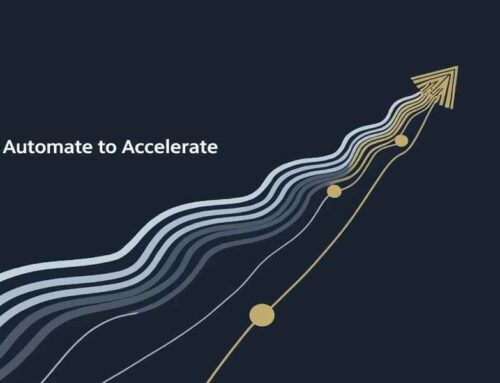
How to Use AI to Gain Unbelievable Business Growth
Imagine a world where your business could predict customer needs before they even realize them, optimize operations to cut costs while boosting efficiency and uncover hidden opportunities in data that were once too complex to analyze.
This isn’t science fiction, it’s the reality of today’s business landscape, thanks to artificial intelligence (AI). As we stand at the intersection of innovation and opportunity, the question isn’t whether your business should embrace AI, but how to use AI to gain unbelievable business growth.
In this article, we’ll explore actionable strategies, real-world examples and ethical considerations to help you harness the power of AI and propel your business forward. Whether you’re a startup or an established enterprise, AI isn’t just a tool, it’s a game-changer. Let’s dive in.
-
Harnessing Data for Strategic Decisions
Data is the lifeblood of modern business growth. But with the sheer volume of information available, from customer interactions to supply chain metrics, how do you turn raw data into actionable insights? This is where AI shines.
Consider this: A global retailer used AI-driven analytics to analyze customer purchase patterns, weather data and social media trends. The result? A 20% increase in sales by predicting seasonal demand more accurately.
Ask yourself: How can your business leverage AI to turn raw data into actionable insights?
AI tools like machine learning algorithms can process vast datasets in seconds, identifying trends humans might miss. For instance, predictive analytics can forecast market shifts, while sentiment analysis tools can gauge customer satisfaction in real time.
Andrew Ng, a pioneer in AI, once said, “AI is the new electricity; it’s going to power everything.” Just as electricity transformed industries, AI is revolutionizing how businesses make decisions.
To start, invest in AI platforms that integrate with your existing systems. Tools like Google Analytics 360 or IBM Watson can help you visualize data patterns, enabling you to pivot strategies faster than competitors.
-
Enhancing Customer Experience with AI
Your customers are your most valuable asset. AI can transform how you engage with them, turning interactions into opportunities for loyalty and retention.
Take the example of a streaming service that uses AI to recommend personalized content, boosting user engagement by 30%. Or consider chatbots that resolve customer queries in seconds, freeing up human agents to handle complex issues.
Question: What if your customer service could anticipate needs and resolve issues before they escalate?
AI-driven personalization is key. By analyzing browsing history, purchase behavior and even social media activity, AI can tailor recommendations, marketing messages and support. A study by McKinsey found that companies using AI for customer experience see a 20-30% improvement in customer satisfaction.
But remember: AI isn’t about replacing humans, it’s about amplifying their efforts. As Satya Nadella, CEO of Microsoft, noted, “AI is a tool to empower people, not replace them.” Use AI to handle repetitive tasks, so your team can focus on building relationships.
-
Operational Efficiency: The Engine of Growth
Operational inefficiencies can stifle business growth. Manual processes, delays and resource mismanagement cost companies billions annually. AI can automate, optimize and streamline workflows, freeing up time and capital for innovation.
For instance, a manufacturing firm reduced downtime by 15% using AI-powered predictive maintenance. Sensors and machine learning algorithms detected equipment issues before they caused failures, saving millions in repairs.
Ask yourself: Could automating routine tasks free up your team to focus on innovation?
AI’s role in operational efficiency extends beyond manufacturing. Supply chain management, inventory control and even HR processes can be automated. Robotic Process Automation (RPA) tools handle repetitive tasks like data entry, while AI-driven scheduling optimizes workflows.
The result? Lower costs, faster delivery times and happier customers, cornerstones of sustainable business growth.
-
Predictive Analytics: Seeing the Future
Uncertainty is the enemy of growth. AI’s predictive capabilities help businesses anticipate trends, mitigate risks and capitalize on opportunities before competitors.
A financial services company used AI to analyze market data and customer behavior, predicting a 12% dip in demand for a product line. By adjusting marketing strategies early, they avoided a potential revenue loss of $5 million.
Question: Can your business predict market trends and customer behavior accurately?
Predictive analytics leverages historical data to forecast outcomes. For example:
- Demand forecasting: AI models can predict inventory needs based on seasonal trends and external factors like weather.
- Risk assessment: Banks use AI to evaluate loan applications, reducing default rates by spotting red flags early.
As Ginni Rometty, former CEO of IBM, said, “The world is speaking to us through data. We need to listen.” By listening, businesses can make proactive decisions that drive growth.
-
Automation and Process Optimization
Automation isn’t just about saving time, it’s about scaling without sacrificing quality. AI-powered automation can handle everything from customer support to backend processes, ensuring consistency and speed.
Consider a SaaS company that automated its onboarding process using AI chatbots. New users received tailored guidance, reducing support tickets by 40% and increasing retention.
Ask yourself: How much time and money could your business save by automating routine processes?
Start small:
- Use AI chatbots for customer service.
- Automate email marketing campaigns with tools like HubSpot.
- Deploy RPA (Robotic Process Automation) for tasks like payroll processing.
The key is to identify repetitive, high-volume processes and let AI handle them. The time saved can be reinvested into strategic initiatives that fuel growth.
-
Ethical Considerations: Building Trust in the AI Era
AI’s potential is vast, but it’s not without challenges. Ethical use is critical to maintaining trust with customers and stakeholders.
A major concern is bias in AI systems. If algorithms are trained on incomplete or skewed data, they can perpetuate unfair practices. For example, facial recognition tools have faced criticism for misidentifying people of color due to biased datasets.
Question: Are you ensuring your AI systems are transparent and fair?
Transparency is key. Businesses must audit AI models regularly to identify and correct biases. Additionally, prioritize privacy by adhering to regulations like GDPR.
As Tim Berners-Lee, inventor of the World Wide Web, emphasized, “AI must be developed with ethical principles to ensure it benefits everyone.” By prioritizing ethics, you build a reputation for integrity, which is vital for long-term growth.
7. AI-Driven Lead Generation: Fueling Growth with Precision
One of the most overlooked yet powerful applications of AI is its ability to generate and qualify leads at scale. Traditional lead generation methods are often time-consuming and inefficient, but AI transforms this process by:
Key Strategies for AI-Driven Lead Generation
- Predictive Lead Scoring
- AI analyzes historical data (Examples, Website Behavior, Purchase History) to score leads based on their likelihood to convert. For example, Salesforce Einstein uses machine learning to prioritize high-value prospects, reducing sales teams’ time spent on unqualified leads by up to 50%.
- Personalized Outreach
- AI tools like HubSpot or Drift automate personalized email or chat campaigns. By analyzing customer interactions, AI crafts tailored messages that resonate with specific buyer personas, boosting conversion rates.
- Social Media Lead Mining
- Platforms like LinkedIn and Twitter can be mined for leads using AI. Tools like Hunter.io or Clearbit use natural language processing (NLP) to identify decision-makers and generate contact lists based on company size, industry and other criteria.
- Chatbots for Qualification
- AI chatbots on websites or messaging apps can ask qualifying questions (Budget, Pain Points) to segment leads before handing them to sales teams. A study by Conversica found that AI chatbots can increase lead response rates by 3x.
Real-World Success Stories
Coca-Cola: Used AI to analyze social media trends, leading to the launch of Cherry Sprite, a flavor demanded by fans. Result? A 7% sales surge.
Sephora: Their Virtual Artist app lets users try makeup via AR, increasing online sales by 11%.
Delta Airlines: Predictive maintenance AI reduces flight delays by 98%, saving millions annually.
Lesson: AI isn’t just for tech giants. It’s accessible to businesses of all sizes.
Conclusion: The Path to Unbelievable Business Growth
The businesses that dominate the future will be those that systematically integrate AI into every facet of their operations, from data analysis to lead generation, customer experience and ethical innovation. By leveraging AI to automate repetitive tasks, predict trends and nurture high-value leads, you can unlock unprecedented scalability and profitability.
The question isn’t whether to adopt AI, it’s how quickly you can act. Start by identifying one area (Examples, Lead Scoring, Customer Insights or Operational Efficiency) where AI can deliver immediate ROI.
Your Call to Action
Ready to take the leap? Start by identifying three areas where AI could add the most value to your business. Whether it’s improving customer insights, streamlining operations or enhancing predictive analytics, begin small and scale.
The future of business growth is here. Will you be a pioneer or a follower?
Final Thought
As Elon Musk once said, “AI is the future of business.” Don’t just keep up, lead the way.
FAQs
- Q: What are the top ways AI can drive business growth?
A: AI drives growth through data analysis, predictive analytics, automation and enhanced customer experiences. For example, it can optimize operations, forecast market trends, personalize marketing and automate repetitive tasks to free up resources for innovation.
- Q: How does AI improve customer experience?
A: AI enhances customer experience by personalizing interactions (Example, Product Recommendations), resolving issues via chatbots and analyzing feedback to identify pain points. This builds loyalty and retention, key drivers of business growth.
- Q: What tools are best for AI-driven data analysis?
A: Popular tools include Google Analytics 360, IBM Watson and Microsoft Azure AI, which help businesses analyze data, uncover patterns and make informed decisions.
- Q: How can small businesses start using AI for growth?
A: Start small by automating routine tasks (Example, Email marketing with AI tools like HubSpot) or using chatbots for customer support. Focus on areas with the highest impact, like data-driven decision-making.
- Q: What ROI can businesses expect from AI investments?
A: AI can boost ROI through cost savings (Reduced downtime via predictive maintenance) and revenue growth (Personalized Marketing). A McKinsey study found companies using AI achieve 20–30% higher customer satisfaction and operational efficiency.
- Q: Are there risks to using AI for business growth?
A: Yes. Risks include bias in algorithms, privacy concerns and over-reliance on automation. Ethical AI practices (Examples, Transparent data use, Regular audits) are critical to mitigate these risks.
- Q: How does AI help with operational efficiency?
A: AI automates workflows (Robotic process automation for data entry), predicts equipment failures and optimizes supply chains. This reduces costs, minimizes errors and accelerates processes.
- Q: What are real-world examples of AI-driven growth?
A: Here are a few examples.
- A retailer used AI to predict demand, boosting sales by 20%.
- A manufacturer reduced downtime by 15% using predictive maintenance.
- A streaming service increased engagement by 30% via personalized recommendations.
- Q: How can AI improve marketing strategies?
A: AI analyzes customer behavior to create hyper-personalized campaigns, optimizes ad spending and predicts trends. For instance, dynamic pricing tools adjust prices in real time based on demand.
- Q: What’s the future of AI in business growth?
A: AI will become even more integral, enabling real-time decision-making, hyper-personalization at scale and seamless automation. Businesses that adopt ethical AI frameworks will lead in innovation and growth.
11. Q: How does AI improve lead generation?
A: AI automates personalized outreach, scores leads based on behavior and mines data to identify high-value prospects. This reduces sales cycles and increases conversion rates.
12. Q: What tools are best for AI-driven lead generation?
A: HubSpot, Salesforce Einstein, Drift and Clearbit are top tools for lead scoring, outreach and qualification.
Categories
- Business Growth Strategies (143)
- Customer Experience and Retention (23)
- Digital Marketing and SEO (28)
- Financial Planning and Investment (26)
- Leadership and Team Management (28)
- Personal Development and Productivity (71)
- Technology and Innovations (52)
- USA Biz Growth (1)
Subscribe To Our Newsletter













